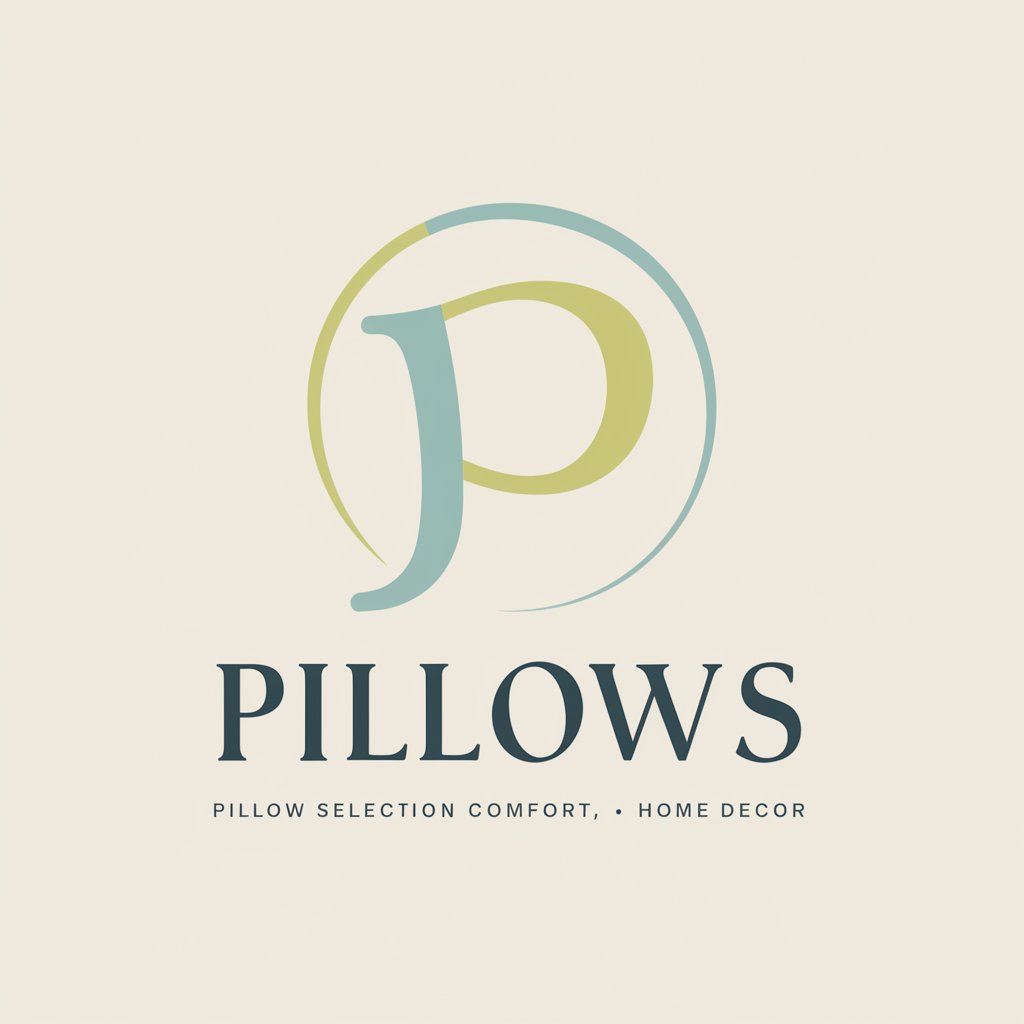
Pillows - Insights on Pillow Selection

Hello! Let's find the perfect pillow for you.
Elevate Comfort with AI-Powered Pillow Advice
Can you recommend a pillow for side sleepers?
What are the best pillows for enhancing home decor?
How do different pillow materials affect sleep comfort?
What tips do you have for arranging pillows on a bed?
Get Embed Code
Understanding Pillows: Functions and Design Purpose
Pillows, in the context of this GPT's expertise, serve multiple purposes beyond just providing a soft place to rest one's head. They are integral to sleep comfort, supporting various sleeping positions to ensure proper alignment of the spine and neck. Additionally, pillows play a significant role in home decor, adding aesthetic value and comfort to living spaces. From materials ranging from memory foam for support and contouring to natural feathers for softness and luxury, pillows cater to diverse needs and preferences. Scenarios illustrating their importance include choosing a firm memory foam pillow to alleviate neck pain for side sleepers, or selecting decorative throw pillows to enhance the color scheme and texture of a living room. Powered by ChatGPT-4o。

Core Functions and Real-World Applications of Pillows
Enhancing Sleep Comfort
Example
Memory foam pillows
Scenario
A side sleeper uses a contoured memory foam pillow to maintain spinal alignment, reducing discomfort and improving sleep quality.
Supporting Specific Sleeping Positions
Example
Cervical pillows
Scenario
An individual with chronic neck pain opts for a cervical pillow designed to support the natural curve of the neck, offering relief and aiding in a restful night's sleep.
Interior Decoration
Example
Decorative throw pillows
Scenario
A homeowner adds a mix of velvet and cotton throw pillows to their sofa, introducing texture and a pop of color to revitalize the living room's decor.
Allergy Relief
Example
Hypoallergenic pillows
Scenario
Someone with allergies selects hypoallergenic pillows filled with synthetic fibers to minimize exposure to allergens, improving their sleep environment.
Target User Groups for Pillows Services
Sleep Seekers
Individuals experiencing sleep discomfort or those with specific sleep-related needs, such as side sleepers, back sleepers, or those with health conditions like acid reflux. These users benefit from personalized pillow recommendations that enhance sleep quality and comfort.
Home Decor Enthusiasts
People looking to enhance the aesthetic appeal of their living spaces. They benefit from advice on selecting and arranging pillows that complement their decor style, whether it's modern minimalism or cozy bohemian.
Allergy Sufferers
Individuals seeking to minimize allergen exposure in their sleeping environment. They benefit from recommendations on hypoallergenic pillow options that can help improve their sleep quality without triggering allergies.
Eco-conscious Consumers
Shoppers prioritizing sustainability in their purchases. They benefit from insights on eco-friendly pillow materials and brands, aligning with their values without compromising on comfort or style.

How to Use Pillows
Start with a Free Trial
Begin by visiting a platform offering a free trial for insights and assistance on pillows without the need for registration or subscribing to premium services.
Identify Your Needs
Determine your specific requirements, whether for sleep comfort, support for specific sleeping positions, or enhancing home decor.
Explore Pillow Types
Learn about different types of pillows, including materials like memory foam, down, or latex, and their benefits for various needs.
Consider Firmness and Support
Select a pillow based on the level of firmness and support needed for your neck and back, considering your usual sleeping position.
Maintenance and Care
Understand the care instructions for your pillow to maintain its condition and effectiveness, including cleaning and replacement recommendations.
Try other advanced and practical GPTs
If You See My Baby meaning?
Unlocking Depth in AI Conversations

Local Flowers meaning?
Uncover the essence of local flora with AI.

Bill Monroe For Breakfast meaning?
Unleash creativity and knowledge with AI

My Past Is Present meaning?
Unlocking Insights from Your Past to Illuminate Your Present

Last Bus Home meaning?
Unlock insights with AI-powered analysis

Feels Like Home meaning?
Personalizing AI for You

Blew Up (The House) meaning?
Empower Your Creativity and Research with AI

Stainless Steel
Empowering with Stainless Steel Intelligence

Singles You Up meaning?
Unveiling the Depths of Language

Rain In My Favourite House meaning?
Elevate Creativity with AI

MediConsult Assistant
Empowering Healthcare with AI

Rudolph The Red-Nosed Reindeer meaning?
Illuminate Your Holidays with AI-Powered Rudolph Insights

Frequently Asked Questions about Pillows
What types of pillows are best for side sleepers?
Side sleepers benefit most from thicker, firmer pillows that fill the gap between the ear and outer shoulder. Memory foam, latex, or hybrid pillows are excellent choices for providing the necessary support and alignment.
How often should I replace my pillow?
Pillows should generally be replaced every 1 to 2 years, depending on the material and how well they maintain shape and support over time. Regular cleaning and using pillow protectors can extend their lifespan.
Can pillows help with neck pain?
Yes, the right pillow can significantly reduce neck pain by maintaining proper alignment of the spine during sleep. Contoured memory foam pillows or cervical pillows are designed specifically for this purpose.
Are there hypoallergenic pillow options?
Absolutely, pillows made from materials like latex, memory foam, and certain synthetics are resistant to dust mites and allergens, making them suitable for allergy sufferers.
How do I choose a pillow for home decor?
Select pillows based on the colors, textures, and patterns that complement your interior design theme. Consider the room's color palette and use pillows as accents to add depth and interest to the space.





